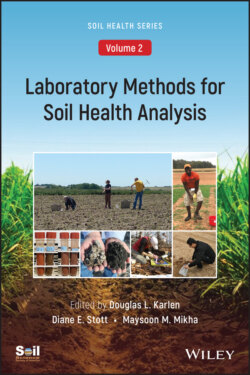Читать книгу Laboratory Methods for Soil Health Analysis, Volume 2 - Группа авторов - Страница 45
Functions of SOC
ОглавлениеSoil carbon supports essential soil and associated ecosystem functions. Concentrations of SOM range from 0.2% in mineral soils to over 80% in peat soils (Smith et al., 1993). Albrecht (1938) stated “soil organic matter is one of our most important national resources… and it must be given its proper rank in any conservation policy”. Larson and Pierce (1994) listed SOC as one of five key measures of soil that included soil cation exchange capacity (CEC), bulk density (BD), water retention, and aeration.
Furthermore, although SOC comprises a small portion of agricultural soils, it significantly affects soil health (Rice et al., 1996; Doran and Zeiss, 2000; Kibblewhite et al., 2008, Bünemann et al., 2018). Currently, the USDA Natural Resource Conservation Service (NRCS) defines soil health as the capacity of a specific kind of soil to function, within natural or managed ecosystem boundaries, to sustain plant and animal productivity, maintain or enhance water and air quality, and support human health and habitation. Soil organic matter imparts many beneficial biological, chemical, and physical properties to soil, specifically improving its structure (Six et al., 2000; Dexter et al., 2008); supporting water infiltration and retention (Boyle et al., 1989; Yang et al., 2014); reducing erosion through increased infiltration, decreased runoff, and more large aggregates (King et al., 2019; Barthès and Roose, 2002); increasing crop yield through water and nutrient supply (Cambardella and Elliot (1992; Pan et al., 2009; Oldfield et al., 2018); and storing C for climate change mitigation (Paustian et al., 2016; Lal and Follett, 2009).
